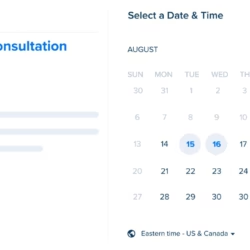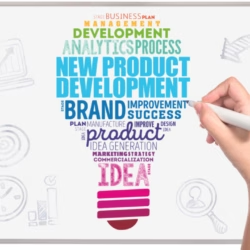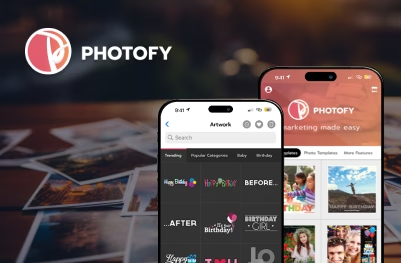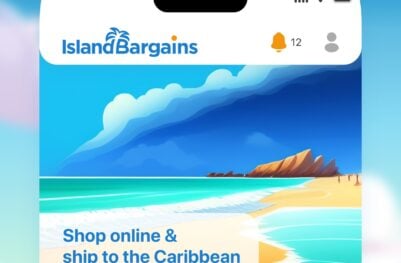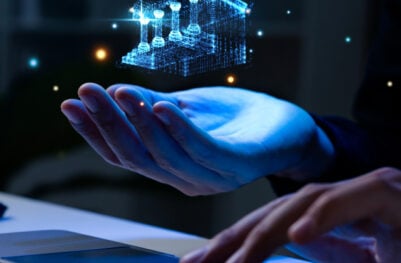- Developers
- Developer Blog
- Blockchain Development
- How to Make an NFT Game
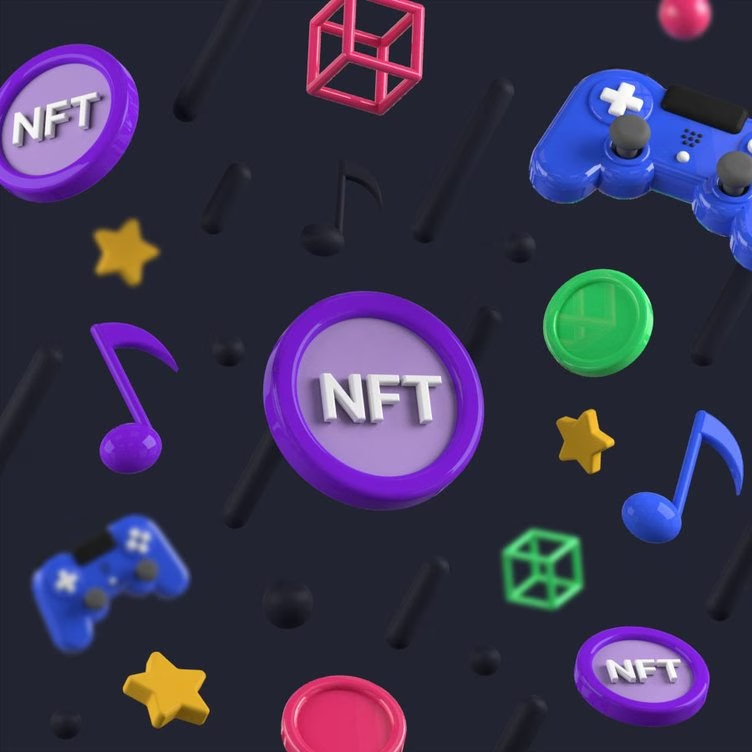
profile

By Aran Davies
Verified Expert
9 years of experience
Aran Davies is a full-stack software development engineer and tech writer with experience in Web and Mobile technologies. He is a tech nomad and has seen it all.
Wondering how to make an NFT game?
There’s a growing market for NFTs (Non-fungible tokens). Game developers are creating NFTs for online video games, and artists are tokenizing digital art pieces using NFTs.
NFTs have many more use cases which is why they are becoming more and more popular and increasingly making sensationalist news headlines.
If “How do I create my own NFT game?” is the question you keep asking yourself, then this article is for you. Below I am going to give the answer exactly to this question.
Steps to make an NFT game
- Gain a detailed understanding of the NFT space
- Review some of the popular NFT games
- Familiarize yourself with the outline of an Ethereum NFT game development project
- Kick off your project to develop game NFTs
- Gather, finalize, and document the requirements for your NFT game
- Hire a team to develop a crypto NFT game
- Install and configure the Ethereum blockchain development tools
- Design and develop the front end of the web app
- Develop smart contracts for your game NFTs
- Review, test and deploy smart contracts
- Connect the smart contracts with the web app
- Initialize the smart contracts
Let’s consider each step to create an NFT game in detail:
1. Gain a detailed understanding of the NFT space
You can create a sound strategy for your NFT game if you get a thorough understanding of the NFT space. Take a look at the following aspects:
1a. What NFTs are, and how they work
NFTs are cryptographic tokens built on a decentralized blockchain network. They offer the same security features as cryptocurrencies like Bitcoin (BTC) or Ether (ETH).
Developers that create NFTs mostly use the Ethereum blockchain network, which secures NFTs. NFTs are unique, however. One Bitcoin or Ether has the same price as another Bitcoin or Ether. That’s not the case with NFTs.
NFTs are indivisible. You can divide a Bitcoin or Ether into smaller units, however, you can’t do that for an NFT.
1b. Use cases of NFTs, e.g., securing collectibles, etc.
The combination of security, uniqueness, and indivisibility makes NFTs ideal for tokenizing digital artworks, game items, digital collectibles, and similar items. Entrepreneurs and developers have used NFTs to tokenize memes, GIFs, and digital cartoons too.
Tokenizing digital artworks
Think of an artist creating digital artwork. In the online world, unethical users can easily copy artwork. They can claim creative rights. Original artists don’t get the money or fame they deserve.
What if artists create NFTs for their digital artworks? Artists can upload their artwork and document the ownership information.
NFTs are secured on a decentralized blockchain platform. No one can tamper with an NFT, therefore, no one can manipulate the creative rights. That boosts the motivation of artists to use NFTs.

Get a complimentary discovery call and a free ballpark estimate for your project
Trusted by 100x of startups and companies like
Tokenizing game assets
The gaming industry is utilizing these security features of NFTs. Game developers can create NFTs for the game assets.
Think of a virtual card game with unique trading cards in the form of NFTs. New players buy these trading cards by staking their money. During a gameplay scenario, they trade them with existing gamers.
New players know that NFTs on a decentralized blockchain will keep their transactions secure. That improves their gaming experience, which is good news for a game developer.
Tokenizing real estate properties
NFTs aren’t confined to virtual world applications only, and real-world projects are shaping up. Entrepreneurs are planning to tokenize real-life assets using NFTs too. Start-ups are exploring NFTs to tokenize real estate properties. Tokenizing real estate properties with the help of NFTs can bring in more investors to this sector.
Propy, a start-up is already working on launching an NFT-based real estate platform. Users can contact this company if they want to sell their high-demand property as an NFT.
1c. Substances vs hype around NFT projects
Many NFTs have commanded high prices. Consider the following examples:
- Beeple, the well-known digital artist launched a collage named “Everydays – The first 5000 days” in the form of an NFT. An auction fetched $69 million for it.
- Consumers loved the “NBA Top Shot”. It’s a digital trading card system that uses NFTs. A February 2021 report mentioned this NFT-based trading card has so far clocked $230 million in gross sales.
NFTs attract plenty of attention on mainstream and social media. Major companies are actively mulling their moves into the NFT space. The following examples illustrate this:
- A Coindesk report indicates that Facebook’s Metaverse will support NFTs.
- An Ars Technica report states that Discord is exploring the NFT space actively.
The blockchain and crypto world is already very upbeat about NFTs. Consider the following examples:
- On the Binance Smart Chain (BSC), NFTs have become popular. “Battle Pets” is a popular NFT game on BSC.
- There’s growing convergence of DeFi (Decentralized Finance) platforms and NFTs. BakerySwap, a popular DeFi (Decentralized Finance) platform allows consumers to stake coins for NFTs. This platform allows gamers to trade pets, the collectibles in the “Battle Pets” NFT game.
- Polygon, the decentralized protocol has seen significant UAW (Unique Active Wallets) growth due to NFT games.
Questions exist about whether the interest in some NFTs will sustain. There are examples of memes as NFTs being sold for thousands of dollars. Only time will tell whether the appeal for such NFTs is just hype.
1d. The NFT ecosystem, e.g., NFT marketplaces like OpenSea
There’s a growing NFT ecosystem. Take the example of NFT gaming platforms like Decentraland. It’s an NFT platform for playing fantasy games.
There are also NFT marketplaces where consumers can trade NFTs online. Check out the following examples:
- OpenSea;
- Rarible;
- SuperRare.
1e. NFT scams
Take the necessary steps to give confidence to users when building an NFT game. This becomes doubly important due to NFT scams. Perpetrators of scams trick unsuspecting consumers in the following ways:
- Creating fake NFT marketplaces;
- Social media impersonation;
- Customer support impersonation;
- Investor scams;
- Giveaway scams.
1f. The importance of Ethereum when developing NFT-based apps
Entrepreneurs and developers frequently use the Ethereum blockchain platform to develop NFT apps. The reasons are as follows:
- The Ethereum blockchain network offers the “Ethereum Virtual Machine” (EVM), a computing platform. Programmers can develop DApps (Decentralized Apps) using it.
- Software engineers can use Solidity, a powerful programming language to develop smart contracts. DApps must execute smart contracts on their back end.
- There’s a rich ecosystem of Ethereum blockchain development tools.
- Developers can use extensive Ethereum development tutorials.
I recommend you use the Ethereum blockchain platform to develop your proposed NFT game.
2. Review some of the popular NFT games
NFT games enable players to have mathematically-proven game assets. They can easily prove their ownership of the game items. Some NFT games allow players to play and earn, therefore, they are increasingly popular.
Check out the following well-known game NFTs:
A. Axie Infinity
Axie Infinity is a highly popular Pokémon-style NFT game. The game involves imaginary creatures named Axies. Players can access this game on the web, Android, and iOS.
Developers have used the ERC-721 standard to create the NFTs in this game. ERC-721 is the Ethereum standard for NFTs. “Axie Infinity Shard” (AXS) is the governance token for this game, which is built using the ERC-20 token standard.
Gamers can trade the NFTs earned in this game on popular Ethereum NFT marketplaces. Players can earn a good deal of money by playing this interesting game. It’s built on the Ethereum blockchain.
The developers of this game made significant improvements. Gamers are impressed with this, and Axie Infinity has seen a noticeable growth in the player base. The improvements include a scalability solution.
B. CryptoKitties
CryptoKitties is a blockchain-based game where gamers can breed digital cats. These digital cats are game assets, and they are NFTs.
The developers of this game built it using the Ethereum blockchain platform. They launched it in November 2017, and the game quickly became popular. Players had to buy digital cats using Ether, the native cryptocurrency of Ethereum.
Shortly after its launch, the traffic from this game caused noticeable congestion in the Ethereum blockchain network. That’s a testimony of how quickly the game became viral.
The game soon attracted a large player base. In early 2018, the game had 1.5 million players. The total transaction volume amounted to $40 million at that time. Some of the digital cats commanded prices in excess of $300,000.
C. CryptoPunks
CryptoPunks was one of the early NFT games. The developers of this game launched it in June 2017. They built CryptoPunks using the Ethereum blockchain platform.
The game has over 10,000 unique collectible characters, which are digital “avatars”. The developers of CryptoPunks created them as NFTs. CryptoPunks inspired the Ethereum project team to develop the ERC-721 standard for NFTs. These digital “avatars” had traded for hundreds of thousands of dollars at a time.
D. Gods Unchained
Gods Unchained is a popular NFT game. It’s an online strategy trading card game, where gamers can earn money.
Hire expert developers for your next project
1,200 top developers
us since 2016
The developers of this game announced it in 2018. They built it using the Ethereum blockchain network. In fact, the minting of the game assets for this game takes place using “Immutable X”. It’s a layer 2 Ethereum network.
The developers of this game plan to launch the GODS token, which is the native cryptographic token for this game. The game developers used the ERC-20 standard to develop this token.
Players will use the GODS token as the payment method to buy rare trading cards. They will be able to buy and sell them in online marketplaces like Coin list.
E. Sandbox
Sandbox is a popular blockchain-based game, and you can think of it as a digital universe. The developers of this game created it using the Ethereum blockchain platform. The game assets are NFTs.
Sandbox has an ecosystem where players can design and build game items. A “Game Maker” interface enables players to create their own games. Finally, players can trade the game assets in the Sandbox marketplace.
3. Familiarize yourself with the outline of an Ethereum NFT game development project
Familiarize yourself with the Ethereum blockchain application development project outline. Such a project involves the following:
3a. DApp (Decentralized App) development:
Creating an Ethereum NFT game involves developing an Ethereum DApp (Decentralized app). DApps are web apps with the following defining characteristics:
- You can develop the front end with any web development technology like JavaScript.
- The back end of a DApp must consist of smart contracts.
- A DApp should be an open-source application.
- A DApp should run on a decentralized blockchain platform like Ethereum.
- You can make changes to a DApp only if you have the consensus of its user community.
- A DApp needs to have a cryptographic token, which is created using an established cryptographic standard.
- DApps must store data on a decentralized blockchain like Ethereum. They must comply with established cryptographic standards for this.
- No one user can control the majority of the crypto tokens. The condition ensures democratic decision-making within the user community.
3b. Smart contract development
An Ethereum DApp must run smart contracts on the back end. Smart contracts are programs with the following characteristics:
- They are open-source.
- Smart contracts execute autonomously.
- They contain “If-Then-Else” statements. Based on predefined conditions, smart contracts transfer cryptographic tokens.
- You can’t modify smart contracts after you deploy them since they are stored on a decentralized blockchain like Ethereum. Smart contracts are immutable.
- Smart contracts store their execution results on a decentralized blockchain like Ethereum. Therefore, you can’t reverse their execution.
Programmers can create Ethereum smart contracts using Solidity, a powerful programming language.
3c. Creating cryptographic tokens
You need to develop Ethereum smart contracts to create new cryptographic tokens. The Ethereum project team offers different standards for different types of tokens. When creating an NFT game using the Ethereum platform, you need to use the following standards:
- ERC-20: It’s the most common Ethereum standard for cryptographic tokens. You will use this to create the utility and governance tokens in your NFT game.
- ERC-721: This standard is for creating NFTs. You will use this for tokenizing the game assets.
4. Kick off your project to develop game NFTs
Initiate your project. You need to onboard a small team at this point. A project manager (PM) should lead this team. You need a software architect in this team, furthermore, you need a few business analysts (BAs).
Look for a PM with experience in leading blockchain application development projects. The PM should know PM best practices. Hire architects and BAs with experience in blockchain projects.
BAs need to elicit and document the business requirements. The architect should create technical solutions, furthermore, the architect needs to define the non-functional requirements (NFRs).
The PM needs to plan the blockchain development project. This plan should contain the test plan created by the architect.
5. Gather, finalize, and document the requirements for your NFT game
BAs need detailed interviews with the business stakeholders in your organization to gather the functional requirements for the NFT game. These include the following:
- The user interface design parameters and decisions;
- Gameplay scenarios;
- Description of the game items;
- The usage of utility tokens, governance tokens, and non-fungible tokens.
The architect needs to study different NFT games. Based on this, the architect should define the non-functional requirements like scalability, performance, maintainability, etc.
The team should document the project specifications effectively. The PM needs to ensure a thorough review of the requirements, furthermore, the PM needs to establish a requirements management process.
6. Hire a team to develop a crypto NFT game
I recommend you develop the front end of the DApp using JavaScript. You can use JavaScript, HTML, and CSS. Alternatively, you can use JavaScript-based front-end frameworks like Angular and React.js.
You need the following roles to build the complete blockchain development team:
- Web developers with JavaScript experience;
- Ethereum blockchain developers with Solidity skills;
- Testers.
You might wonder whether you can hire developers from freelance platforms. I don’t recommend this approach since I consider an NFT game development project complex.
You will find it hard to manage such a project with part-time freelancers. Time zone differences can make it harder for you to manage their work. Freelance platforms don’t offer any project management support, and they won’t provide replacements in the case of a turnover.
I recommend you hire developers from a reputed software development company. Trustworthy software development companies offer skilled and motivated developers.
They provide full-time developers, and they offer management support. Such companies provide replacements if developers leave the project mid-way.
7. Install and configure the Ethereum blockchain development tools
You need to install the following tools:
7a. MetaMask
MetaMask is a user-friendly Ethereum wallet. You can use it as a browser extension, alternatively, you can use the MetaMask mobile app.
Ethereum blockchain developers commonly MetaMask it to store Ethers. They need these Ethers to deploy and execute smart contracts on the Ethereum “mainnet” (main network). Software engineers also use MetaMask to communicate with the Ethereum blockchain network.
MetaMask is secure. It supports key Ethereum token standards like ERC-20 and ERC-721.
7b. Ganache
Ganache is a popular blockchain client for Ethereum blockchain development. Developers execute commands and run tests using Ganache, which is part of the Truffle Suite of tools.
Programmers can use the Ganache UI or CLI. They can consult the extensive Ganache documentation.
Hire expert developers for your next project
7c. Web3.js
A popular Ethereum JavaScript API, Web3.js is also a collection of important libraries. Ethereum developers interact with local or remote Ethereum nodes using Web3.js. Programmers can refer to the comprehensive Web3.js documentation.
7d. Truffle
Ethereum blockchain developers can use the Truffle suite of tools for different purposes. They can organize smart contracts using it. They can test and deploy smart contracts using the Truffle suite, for which the Truffle documentation is helpful.
Note 1: You need to use more tools for Ethereum blockchain development. However, you don’t need to install them. These are as follows:
- Remix: Remix is a popular IDE (Integrated Development Environment) for coding Solidity smart contracts for the Ethereum platform. It’s a DApp.
- Sepolia: You will need to test the smart contracts you code, and you need a “testnet” (test Ethereum network) for that. Sepolia is an Ethereum testnet. You can deploy and test your smart contracts on Sepolia by using dummy Ethers.
Consult the following resources to configure the Ethereum blockchain development tools:
- General guidance: Read a guide to Ethereum development written by Alex Miller. I will refer to this guide as the “reference article 1”. Also, read a web-apps-to-DApp-conversion guide written by Merunas Grincalaitis. Let’s call this the “reference article 2”.
- MetaMask: Follow the MetaMask documentation on its website and the “reference article 2”. Create an account, and keep your keys secure. You need to connect to the Ethereum blockchain network by using the “developer mode”. Also, establish a connection to Sepolia.
- Ganache: Configure Ganache by following the Ganache GitHub documentation, and open an instance of it.
- Web3.js: Configure Web3.js by following the Web3.js “getting started” guide.
- Truffle: You can configure Truffle easily by following the Truffle documentation.
8. Design and develop the front end of the web app
Your UI (user interface) design team should follow the well-known UI design guidelines. Web developers need to develop the front end by using the relevant JavaScript frameworks and libraries.
Later, you will develop, test, and deploy smart contracts for individual frontend functions. Finally, you will connect the smart contracts to the associated front-end modules.
9. Develop smart contracts for your game NFTs
You need to develop smart contracts for the corresponding frontend functions and cryptographic tokens. Take the following steps to code them:
- Review smart contracts from similar NFT projects.
- Use the Remix IDE to code them.
- Keep the logic of smart contracts simple. This helps to debug them. You will also need fewer Ethers to execute smart contracts with simpler computational requirements.
- Organize the smart contracts using Truffle.
10. Review, test and deploy smart contracts
Implement a structured review of smart contracts. You can’t modify smart contracts after deploying them, which raises the importance of review and testing. Find experienced reviewers for a smart contract audit.
Smart contract audits involve the following steps:
- Locking down the source code;
- Understanding the project and studying the project documentation;
- Preliminary code review;
- Static code analysis;
- Code quality analysis;
- Detecting common vulnerabilities;
- Functionality analysis;
- Reporting issues;
- Tracking them to closure.
Reviewers should look for key vulnerabilities during a blockchain code audit, e.g.:
- Reentrancy;
- Shadowing of variables;
- Storage pointers vulnerable to exploitation;
- Overflows and under-flows;
- Errors that allow hackers to launch a DoS (Denial of Service) attack;
- Cryptographic signature validation errors;
- Creating random numbers incorrectly;
- Access control issues;
- Front-running;
- Timestamp dependencies.
Do the following to test the smart contracts:
- Get dummy Ethers.
- Verify whether the MetaMask connection to Sepolia is still open.
- Navigate to the Remix IDE and use the menu options to deploy smart contracts to Sepolia.
- Use MetaMask to confirm this action.
- Test the smart contracts. Follow the “reference article 2” if you need guidance.
Now that you have tested smart contracts, you need to deploy them on the Ethereum main network. Take the following steps:
- Buy Ethers from a crypto exchange like Coinbase. Store them in your MetaMask wallet.
- Verify whether the Ganache instance started earlier is still running.
- Navigate to the Truffle directory where you stored the smart contracts.
- Use the “Truffle deploy” command to deploy them.
11. Connect the smart contracts with the web app
Take the following steps to connect your smart contracts to the front end of your DApp:
- Open the project in an IDE.
- Create an empty file and name it “web3.min.js”.
- Copy the “web3.min” code from the Web3.js ChainSafe repository on GitHub.
- Paste the code into the “web3.min.js” file and save it.
- Import it into the main HTML file of your project. Check the “reference article 2” if you need help.
12. Initialize the smart contracts
To initialize your smart contracts, first get the contract ABI (Application Binary Interface) for each contract. ABI is a data encoding scheme used in the Ethereum project. Take the following steps to get the ABI:
- Navigate to the “compile” tab or the Remix IDE, and copy the ABI from the ABI section into a text file.
- The ABI information is in JSON format, therefore, it has spaces. You need to remove spaces by using the JSON minify tool.
- Copy the output of JSON minify and paste it into a variable named the “const contractABI”.
Read the “reference article 2” for more information.
Note down the contract address from the “Run” tab of the Remix IDE. Paste it in the “const contractAddress” variable.
You now need to update the different front-end functions to associate them with their respective smart contracts. Take the following steps:
- For each of the smart contracts, create a contract instance.
- Update it to reflect the corresponding “const contractABI” and “const contractAddress” values.
- Update the JavaScript file for a function with the contract instance variable for the corresponding smart contract.
- You need to repeat these steps for all the functions in your DApp. Check out the “reference article 2” for guidance.
You have just built your NFT game app!
Final Thoughts
I have just explained how to make an NFT game. Such projects involving blockchain technology can be complex and so require experts in blockchain technologies.
If you are looking for such expertise then why not take a moment to fill out a DevTeam.Space project specification form? One of our account managers will get in touch to answer any questions that you might have and to show you how our expert smart contract developers can help.
FAQs on how to create an NFT game
Axie Infinity, Gods Unchained, The Sandbox 3D, Cryptokitties, and CryptoPunks are just a few of the well-known blockchain games that use NFTs. The market for NFT games is a lucrative one. New game developers are entering this space, therefore, we can expect the launch of new games.
Blockchain is a new technology. Delivering functionality using blockchain can be a complex project since it’s hard to find competent blockchain programmers. Creating digital assets like NFTs isn’t an exception. Plan the project well to account for the complexities proactively.
DevTeamSpace has highly competent and experienced blockchain developers. Our software engineers have extensive experience in developing a wide range of blockchain-based applications. We can provide skilled, experienced, and motivated blockchain developers.
Other Great Articles From Our Blog:
How to Build a Scheduling App like Calendly
Are you wondering how to build a scheduling app? Read on, as I will cover the main steps to develop an online scheduling application. In this article Create a Scheduling App Additional tips to help you create a scheduling...
Continue readingHow to Hire Healthcare App Developers
Are you looking to hire healthcare app developers? If you are, then you will likely be considering launching an exciting new application. In this article, we will explain how you can hire the professional(s) that you need to turn your...
Continue readingProduct Development Strategy Guide for Founders
Every business founder, CTO, CEO, or product owner has to find the right product development strategy to suit their company’s business goals. There are lots of different product development strategies out there and no real one size...
Continue readingBest Product Management Frameworks for App Development
Are you looking to adopt product management frameworks for your app development project? In this blog, we will cover some of the most used and best product management frameworks for app development. In this article Why Do You...
Continue reading
Alexey Semeney
Founder of DevTeam.Space
Hire Alexey and His Team To Build a Great Product
Alexey is the founder of DevTeam.Space. He is award nominee among TOP 26 mentors of FI's 'Global Startup Mentor Awards'.
Alexey is Expert Startup Review Panel member and advices the oldest angel investment group in Silicon Valley on products investment deals.
